Георгий Павлович (ред.), «От него нельзя оторваться…» Святитель Иоанн Шанхайский в письмах Петра Сергеевича Лопухина к протоиерею Георгию Граббе, Москва 2022. Georgii Pavlovich (ed.), ‘One Cannot Tear Oneself Away from Him…’: St. John of Shanghai in the Letters of Petr Sergeevich Lopukhin to Archpriest George Grabbe, Moscow 2022
The St. Tikhon Orthodox University of Humanities continues to delight with the quality of its scholarly publications. In 2022, it released a book shedding light on a little-studied period in the life of one of the great ascetics of the twentieth century—St. John (Maximovitch), the Wonderworker of Shanghai and San Francisco—namely, his European years from 1951 to 1962.
The book is distinctive in that it does not present a “dry” historical narrative. Rather, we are given a firsthand testimony: the personal correspondence between Petr Sergeevich Lopukhin and Archpriest George Grabbe, recently discovered in the archives of Stanford University in California, USA.
While Fr. George Grabbe is a name well known to most educated readers, the lesser-known Petr Sergeevich Lopukhin devoted the greater part of his life to serving the Church in its administrative structures. Beginning in 1935, he worked in the Chancery of the ROCOR Synod in Sremski Karlovci, later serving as secretary of the Pre-Council Commission and the Second All-Diaspora Council of 1938. From 1948 to 1961, he was the secretary and treasurer of the Western European Diocese during the episcopate of St. John (Maximovitch).
Lopukhin lived in the same building with the saint—Versailles’ Cadet Corps [1]“The Russian Cadet Corps-Lyceum named after Emperor Nicholas II (the Versailles Cadet Corps) was a Russian primary military educational institution in France from 1930 to 1964. The director of … Continue reading—and ate the same food, which, after the cook refused to prepare meals late at night (when the bishop, exhausted from his labors, would return home), St. John at times prepared himself, according to Lopukhin’s own account. Presumably, over the more than ten years of St. John’s service in the Western European diocese, no one was as close to him as Petr Sergeevich. But even this closeness must be qualified: it is only meaningful if one can speak of “closeness” at all, for, as Lopukhin noted, “Archbishop John is very reserved” (p. 117).
Let us say a few words about the edition itself before turning to the content of the book
The editor of the letters, Priest Georgii Pavlovich, notes that “the work of a historian requires verification and evaluation of the information conveyed”—particularly in personal correspondence, where the author expresses private views, “sometimes even mistaken” ones (p. 6). He was the one who initiated this editorial project, equipping the letters with an extensive critical apparatus. The sheer scope of his work is impressive. The editor not only labored to identify virtually every individual mentioned—often only by first name—but even managed to track down the publications the authors refer to only obliquely.
The following passage offers a good example of the editor’s diligence. In one of his letters, Petr Sergeevich writes that he is looking for a publisher for an article of his, which, he says, contains 36,800 characters (p. 33). Fr. Georgii located the published version from 1951 and counted only 25,500 characters, concluding that the letter must have referred to an earlier, longer version of the manuscript.
That said, given the scale of the undertaking, it is hardly surprising that the apparatus contains some errors—and these too deserve mention. For example, on page 70, Fr. Georgii writes that E.I. Makharoblidze served as editor-in-chief of the journal Church Life from 1951 to 1967. But Exakustodian Ivanovich died in August 1960, as recorded in the metrical book of our cathedral in Munich. Moreover, Church Life was the official organ of the ROCOR Synod and relocated with it to the United States in 1950. Makharoblidze, who remained in Germany, could not have served as its editor during that period. He was, in fact, editor-in-chief of Tserkovnyia Vedomosti [Church News], published by the German Diocese, as mentioned on page 77. Unfortunately, another inaccuracy appears there as well: the journal is said to have been published from 1953 to 1964, when in reality it was issued from 1951 to 1971.
How many such inaccuracies the book contains, I cannot say. But do these necessary corrections cast a shadow over the entire critical apparatus? Certainly not. The research involved is extraordinary, extending even to the minutes of ROCOR Council sessions—enabling even a reader with little historical background to enter deeply into the history of the Western European Diocese through the prism of personal correspondence from seventy years ago. This is especially valuable given that the letters touch on a wide range of subjects not directly related to the saint himself, but concerning the broader history of ROCOR—and even European history more generally.
In conclusion, it is worth noting that in addition to the letters, the volume includes several of the saint’s sermons from his time in Europe. Although previously published, they were scattered across obscure journals now preserved in only a few libraries worldwide.
Years ago, I was present at a conversation with one of our senior clergy, the long-serving protodeacon and now distinguished archpriest Georgii Kobro. I remember him, half-jokingly, half-seriously, lamenting the injustice: “St. John,” he said, “was a bishop in America for only four years (1962–1966), yet we venerate him as of Shanghai and (!) San Francisco, while in Europe he served for eleven years—and we never call him of Western Europe.”
Perhaps the candid, and as the editor himself hints, sometimes even mistaken but undeniably sincere letters of Petr Sergeevich Lopukhin will help—if not to answer this question, then at least to feel why things turned out this way.
“If there’s even the slightest opportunity, I will not leave him”
The initial impression that the secretary and treasurer of the Western European Diocese formed upon the arrival of the new bishop was nothing short of ecstatic. In response to a question from Fr. George Grabbe about how he found his new bishop, Petr Sergeevich Lopukhin wrote:
“Being with him constantly fills the heart with joy, and if there’s even the slightest opportunity, I will not leave him. And if I must go, even to London, I will leave with sorrow—it is such a comfort to be near him” (p. 34).
One must bear in mind that this was no neophyte’s impression. Born in 1885, Petr Sergeevich met St. John in the 67th year of his life. He had formed as a theologian back in Belgrade, in close contact with such spiritual giants as Metropolitan Anthony (Khrapovitsky) and Archbishop Gabriel (Chepur). Tellingly, at Lopukhin’s funeral in 1962, St. John remarked on this closeness:
“Metropolitan Anthony will joyfully embrace his spiritual son. Like St. Basil the New, who appeared during the tollhouses to the Blessed Theodora and paid the ransom for her soul, so too will he intercede for the soul of Petr Sergeevich” (p. 250).
It must be noted, however, that Lopukhin’s attitude toward St. John gradually shifted in a negative direction. A tone of fatigue, irritation, and at times even disappointment begins to prevail in his later letters. Yet among all of the saint’s extraordinary qualities—including those that eventually irked Petr Sergeevich—there was one that consistently inspired admiration: the depth of his theological mind. Already at their first meeting in 1951, Lopukhin remarked:
“His sermons are exceptionally rich; his knowledge is immense” (p. 33).
Having lived alongside the saint for two years, he confessed in 1953 that he had lost all desire to “do theology” himself, dwelling next to someone who was a theologian in the patristic sense of the word:
“Living next to Vladyka John, I lost the desire to write: his life is so incredibly strict (I think Merezhkovsky or Berdyaev would say ‘inhumanly’ strict), his knowledge so deep, and my own understanding so shallow in comparison, that I no longer want to write—it all feels like amateurism. So now I write only when I must” (p. 43).
Eventually, Petr Sergeevich began working on transcribing and publishing the sermons of the great hierarch. Thus, in 1955, even as complaints about the bishop began appearing in his letters, Lopukhin could not help but marvel at his wisdom:
“How clever he is! And what sermons he gives, even if awkwardly spoken! This Lent, he spoke about the Cross and the Last Judgment. Milina! (Serbian for ‘grace’ – ed.) I compiled a sermon from various homilies, published in Tserkovnyi Golos [Church Voice], titled Preparation—it’s very good!” (p. 87)
Or again, in a 1958 letter, after another outburst of frustration with the saint’s “unbearable” lifestyle:
“And yet! Despite all his fatigue, how much strength he has, how much he understands, how much he knows! How much he has pondered, grasped, and comprehended in the realm of ideology!” (p. 128)
In the same letter, Lopukhin recounts the exhausting effort it took to transcribe the bishop’s speeches—sermons which, incidentally, St. John, with rare exceptions, forbade him to publish:
“I regret that I can’t convey how he shared these thoughts with me! He’d fall asleep, wake up: ‘Yes, so… Melchizedek… Yes! Pleasing to God… Yes… So then, King of the World…’ I was both frustrated and taking notes, and I didn’t even understand half of what he said—and this was all at night, around 1 a.m.! An unbearable man. But those formulations of his, I believe, provide a foundation for writing an Православную философию права [Orthodox Philosophy of Law](pp. 128–129).
“He has worn himself out! He is exhausted!”
As noted earlier, St. John’s theology went hand in hand with the strictest asceticism and merciless discipline toward himself. It is well known, for instance, that the saint tried to serve the Divine Liturgy daily. Even when, according to Petr Sergeevich’s testimony, he had a fever of 40°C (104°F), his legs were swollen and infected, and doctors put him on penicillin and insisted that he rest, “he would still go to serve—barefoot, in the dirt” (p. 69). He was persuaded to enter a hospital only once, and even then, only on the condition that he would be allowed to serve the Liturgy there every day.
It is also known that throughout his ascetic life, the saint slept sitting up, refusing to allow his body to be “pampered” not only by a bed, but even by a horizontal position. Thus, convincing him to actually lie down in a hospital was an extraordinary challenge. Avoiding bed rest, Vladyka John (perhaps having obtained mercy from God?) began to recover to the surprise of his doctors and ultimately never entered the hospital. Later, however, one infection led to another, and complications returned. At that point, he went to the Lesna Convent. There, an “incredible” report reached Petr Sergeevich—that at the convent, “he lay down and slept lying down” and even “felt good while lying down” (p. 79). But once he returned, he again refused to lie down, joking: “One has to transition back to a normal posture” (p. 79). “He’s wonderful,” his secretary retorted sarcastically, “but sometimes simply unbearable” (p. 70).
If, in the beginning, as mentioned above, P. S. Lopukhin was genuinely in awe of his bishop’s strict way of life, over time that very strictness began to seem more and more of a liability in governing the diocese. As early as 1954, he confessed to Fr. George:
“Sometimes it is very difficult: it feels as if the Bishop is so worn out that he is simply unable to function” (p. 65).
This exhaustion reached the point where Vladyka John would occasionally fall asleep on his feet while visitors crowded in his vestibule—no one could rouse him. Near the end of his own life, the thoroughly worn-out secretary wrote of his even more exhausted archpastor:
“Poor Vladyka John! He has worn himself out! He is exhausted! He does not understand that he no longer has his former strength! That he is often living only by sheer nerves and momentum—but the momentum has ended, the beautiful sermon has been delivered, and he collapses from the heights… Just recently, in a rare moment of clarity, I said to him: ‘Do you realize what you’ve done to yourself? In this condition, you’re good for nothing—you can’t work, you just go from hospital to hospital…’ And for the first time he said to me that he is tired… But how can one compel him to rest!” (p. 127)
“May God grant rest with the saints—but may He never make us live with them”
This well-known saying—attributed here to Archimandrite Sergius (Pfeffermann) of Meudon (p. 56), but often to St. Justin (Popovich)—was frequently recalled in France in connection with St. John (p. 60), and not least by the very author of these letters: the same man who once wrote, “If there’s even the slightest opportunity, I will not leave him,” and “Being with him constantly fills the heart with joy.” But cooperating with someone who lived on the plane of the Divine, beyond space and time, proved to be no easy task:
“Sometimes at 11 p.m. I want to leave, and he says: ‘Good, stop by this evening.’ – ‘What evening? It’s nearly midnight!’ – ‘Ah, I didn’t know!’” (p. 158)
Asceticism of such extremity, from a worldly perspective, meant that Vladyka John apparently struggled with certain administrative duties of the diocese.
“The Bishop is a poor administrator. I told him that as much as I revere him as a theologian, I cannot recognize him as an administrator,” Lopukhin confessed in 1954 (p. 56).
It must also be noted that St. John’s diocese—due in no small part to jurisdictional disputes—was not only the most complex but also the poorest in the Russian Church Abroad. The diocesan center (the Cadet Corps in Versailles) had fallen into “filth and poverty” (p. 66). The Bishop, however, endured the material deprivation with his characteristic ascetic composure, to the bewilderment of his coworkers:
“It seems Vladyka really doesn’t notice the filth. The school year is starting, and they haven’t even washed the mattresses or refilled them with clean straw. The children have no wardrobes, desks, or chairs for their clothes—they either toss them on the floor or on their beds. It’s painful and disgusting to look at, but it doesn’t affect him at all. The stench is unbearable—he doesn’t notice. I understand why some mothers look at him with anger!” (p. 66)
Interestingly, Lopukhin fully understood that only an ascetic indifferent to comfort could survive in such conditions:
“Our financial situation is abnormal: we survive only because it costs us virtually nothing to support the Bishop. The diocese is his domain—only he can be here, and no one else can replace him” (p. 81).
Nevertheless, from a worldly administrative perspective, the secretary of the Western European Diocese repeatedly declared the bishop’s tenure a failure. For example, in 1955 he wrote:
“Things are bleak here. Just as old age comes in waves, so too the awareness of Archbishop John’s failure comes in waves, no matter how much we resisted it. Now, we don’t even resist—and among ourselves we speak openly of this failure, which is now clear to all. With bitterness, Count Apraksin says that among those who most fervently wish Vladyka John health and many years are the most active supporters of the jurisdiction of Metropolitan Evlogii—because they know that no one will go to him. Many are happy that such an ascetic exists, but no one wants to deal with him or live near him” (pp. 94–95, emphasis mine – A.F.).
“A prophet is not without honor except in his own country” (Matt. 13:57)
A wonderworker and a saint, yet one unable to positively influence the material condition of the diocese, turned out to be of little use to Orthodox Europe.
In his later letters, Lopukhin ultimately concludes—and claims to find confirmation from the nuns of the Lesna Convent (p. 90)—that Vladyka John “is in fact neither an elder nor a spiritual father nor an educator” (p. 119), not a father confessor, not a wise discerner of souls (p. 90), but simply a severe ascetic, strict toward himself and others. That is why
“nowhere—not here, not in Brussels—does he have personal relationships, and his visits there are dreaded just as much as we dread his returns here” (p. 96).
Though some of his judgments are clearly mistaken, Lopukhin’s sincere letters suggest that as St. John’s time on the Western European throne continued, fewer and fewer people in the diocese were able to say that “being with him constantly fills the heart with joy.” But the question, after all, is not whether the Spirit waned in St. John—of that there can be no doubt!
Conclusion
A well-known historian of our Russian Church Abroad, Deacon Andrei Psarev, once said to me in conversation:
“There is no doubt,” he said, “that St. John of Shanghai and San Francisco is the greatest gift our Church Abroad has given to the world.”
I would not dare to disagree. The Church produces saints—this is her first and foremost task. And in that sense, St. John is a “pillar and ground” of the Russian Church Abroad. But let us ask: would a historian have spoken so confidently if he had lived fifty years earlier?
I would like to draw attention to an interesting coincidence. In 1951, the same year he met St. John, Petr Sergeevich Lopukhin published a pamphlet at the Monastery of St. Job in Munich titled On the Orthodox Person—a treatise on Orthodox anthropology based on the life and teaching of St. Seraphim of Sarov. In that work, written just before his encounter with another great miracle-worker, he wrote:
“The educated class in Russia failed to notice St. Seraphim. They did not understand him, did not seek him out, and did not go to him… In all of Russian literature, in the historical record of that time, there is not even a mention of St. Seraphim or of Sarov… He was a contemporary of Pushkin, of Lermontov, of the Slavophiles—but if one were to study Russian culture of that period, one could not even guess that a great miracle-working saint, a man partaking of the Kingdom of God, had lived in Russia at that very time—and that the Kingdom was present in and around him on earth. Such blindness is astonishing. It must never be forgotten” [2] Петр Лопухин, О православном человеке, Мюнхен 1951, с. 22. Petr Lopukhin, On the Orthodox Person, Munich, 1951, p. 22. (emphasis mine – A.F.).
Surely, in light of everything said above, this is an instructive observation—wouldn’t you agree? As for drawing conclusions—that is left to each of us.
References
| ↵1 | “The Russian Cadet Corps-Lyceum named after Emperor Nicholas II (the Versailles Cadet Corps) was a Russian primary military educational institution in France from 1930 to 1964. The director of the Corps during this period (1950–1959) was Colonel G. A. Aprelev. In 1952, Bishop John (Maximovitch) moved the Diocesan Center from Meudon into the Corps building.” (p. 52) |
|---|---|
| ↵2 | Петр Лопухин, О православном человеке, Мюнхен 1951, с. 22. Petr Lopukhin, On the Orthodox Person, Munich, 1951, p. 22. |

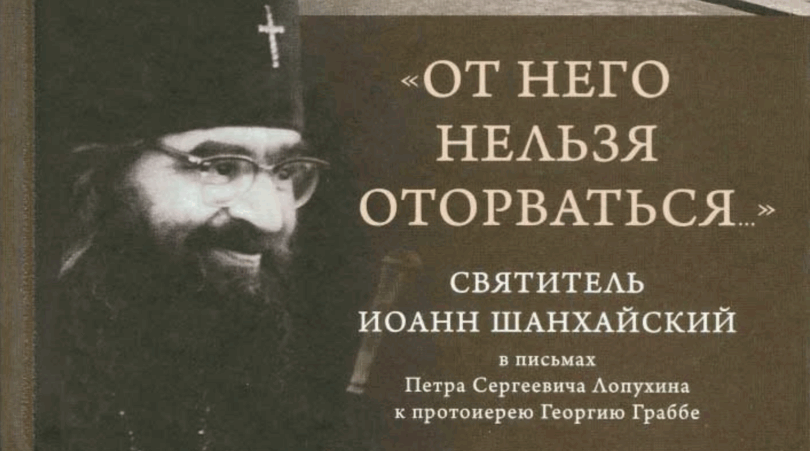
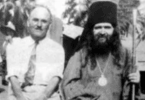

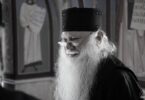
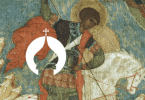

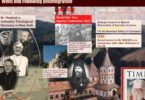
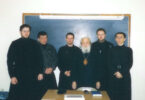
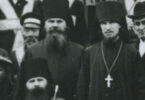
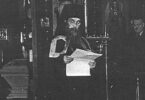
St John has always been known here as St John of Shanghai and Western Europe! He spent 13 years here and was greatly loved, only 3 in the USA, where he was suspended, put on trial, persecuted and slandered,
Wonderful!